H0LiCOW IV. Lens mass model of HE0435−1223 and blind measurement of its time-delay distance for cosmology.
Strong gravitational lenses with measured time delays between the multiple images allow a direct
measurement of the time-delay distance to the lens, and thus a measure of cosmological parameters,
particularly the Hubble constant, H0.
We present a blind lens model analysis of the quadruply-imaged quasar lens HE0435−1223 using deep Hubble
Space Telescope imaging, updated time-delay measurements from the COSmological MOnitoring of
GRAvItational Lenses (COSMOGRAIL), a measurement of the velocity dispersion of the lens galaxy based on
Keck data, and a characterization of the mass distribution along the line of sight.
We account for various sources of systematic uncertainty, including the detailed treatment of nearby
perturbers, the parameterization of the galaxy light and mass profile, and the regions used for lens
modeling.
We use deep HST imaging in three bands, which allow us to reconstruct the brightness distribution
of both the lensed AGN and its host galaxy.
By using the individual surface brightness pixels as constraints, we obtain a detailed mass model of the
lens galaxy.
This requires a very accurate characterization of the point spread function (PSF), which we obtain using
an iterative correction scheme similar to that of Chen et al. (2016).
Our lens model is able to reproduce the main features of the system in all three bands
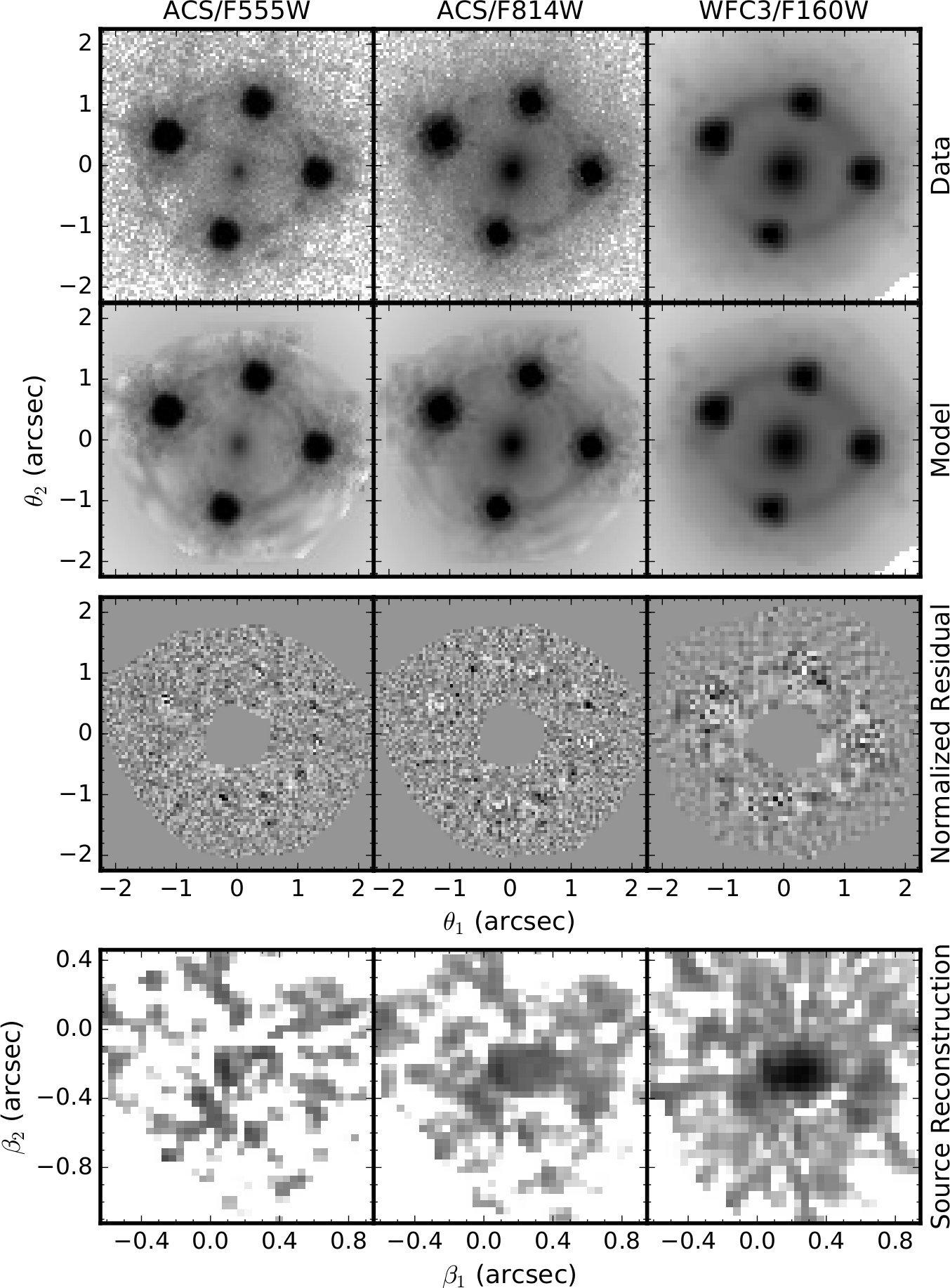
The time-delay distance inferred from our lens model can be biased by the presence of mass along the
line of sight (LOS), which can be quantified by the "external convergence", κext.
In addition, massive perturbers projected close to the lens need to be included explicitly in the lens
model, as they may have a higher-order influence on the lens model (McCully et al. 2016).
Accounting for the effects of the LOS requires deep observations over a wide field of view.
We have obtained deep multiband photometry to characterize the κext distribution using
weighted galaxy number counts near the lens galaxy, calibrated by cosmological simulations. The details
of this procedure are presented in H0LiCOW Paper III.
Furthermore, we have performed a spectroscopic survey of nearby galaxies in the field to search for
groups/clusters along the LOS, as well as determine the redshifts of any important perturbers (see H0LiCOW Paper II).
This survey led us to include the nearest massive galaxy (G1) in our lens model, as well as test the
effects of four additional nearby galaxies (G2-G5).
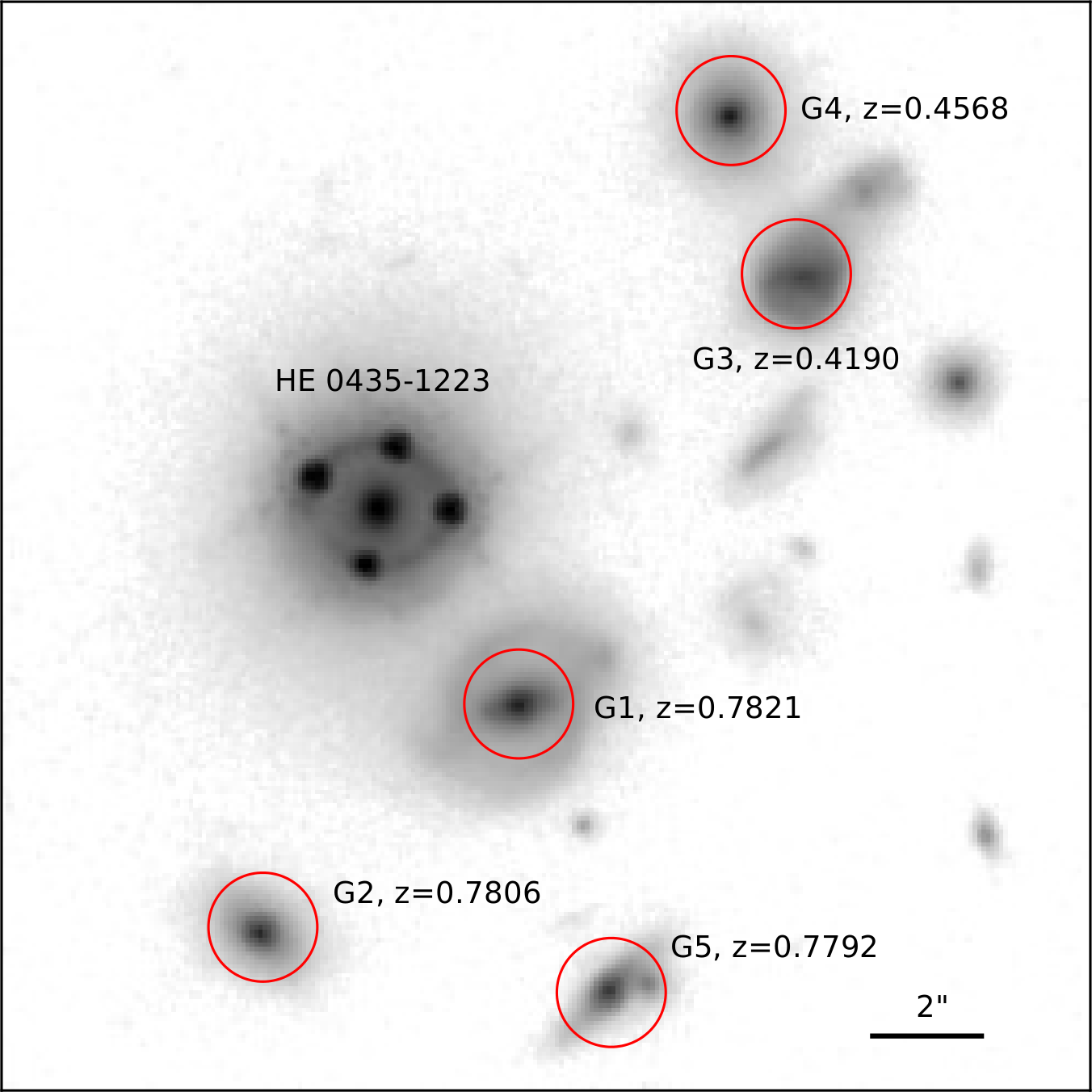
We obtain high-resolution spectroscopy using Keck/LRIS to obtain the velocity dispersion of the lens galaxy in HE0435. The addition of dynamical information helps to break degeneracies in the mass modeling, improving our constraints.
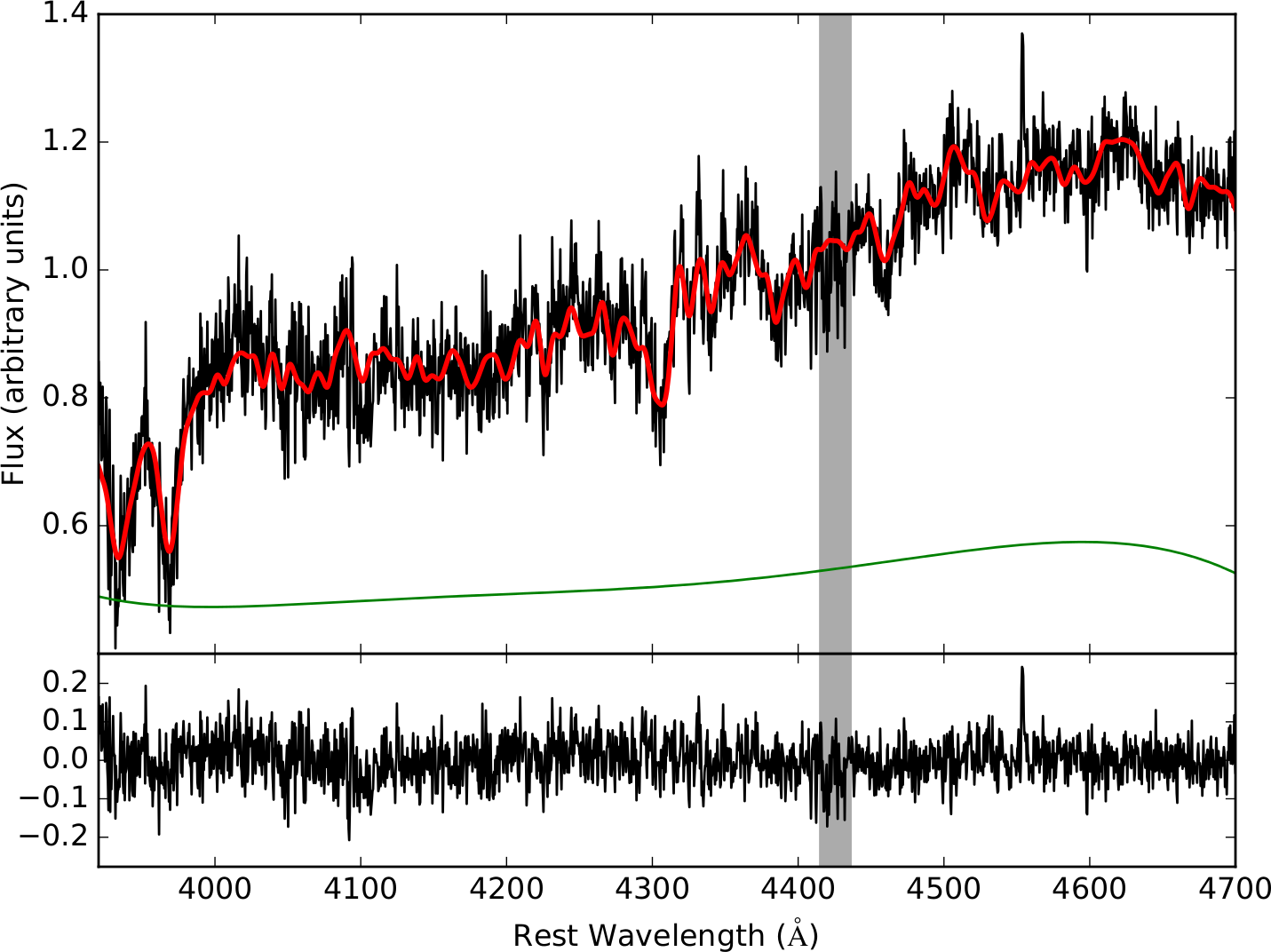
High-precision time delays were measured in this system by the COSMOGRAIL collaboration (Courbin et al.
2005; Eigenbrod et al. 2005; Bonvin et al. 2016).
With 13 years of monitoring, these data provide a robust measurement of the time delays in this system
using a variety of algorithms (see H0LiCOW Paper V).
To account for systematic uncertainties related to effects such as our choice of mass parameterization,
the image regions used in the modeling, our parameterization of the galaxy lens light, and our treatment
of the nearby perturbers, we test an array of different models.
We calculate the time-delay distance for each of these tests, then combine them to obtain the final
distribution.
Throughout our analysis, we blind the H0 values in our lens model, as well as the inferred
time-delay distance values to avoid confirmation bias.
This is done by subtracting the median of the parameter posterior distributions when displaying plots.
This allows us to measure the precision and relative offsets of these parameter distributions and their
correlation with other parameters without being able to see the absolute value.
This eliminates the tendency for experimenters to stop investigating systematic errors when they obtain
an answer consistent with the "expected" result.
After finalizing our analysis and coming to a consensus among the coauthors, we unblind the results and
do not make any further changes to the models.
An example of this procedure is shown in the following plot, where we show our final time-delay distance
distributions.
Throughout our analysis, the top axis showing the absolute values of time-delay distance was hidden, and
all that we were able to see was the bottom axis.
Once the decision to unblind was made, the top axis was revealed and the results were published as-is.
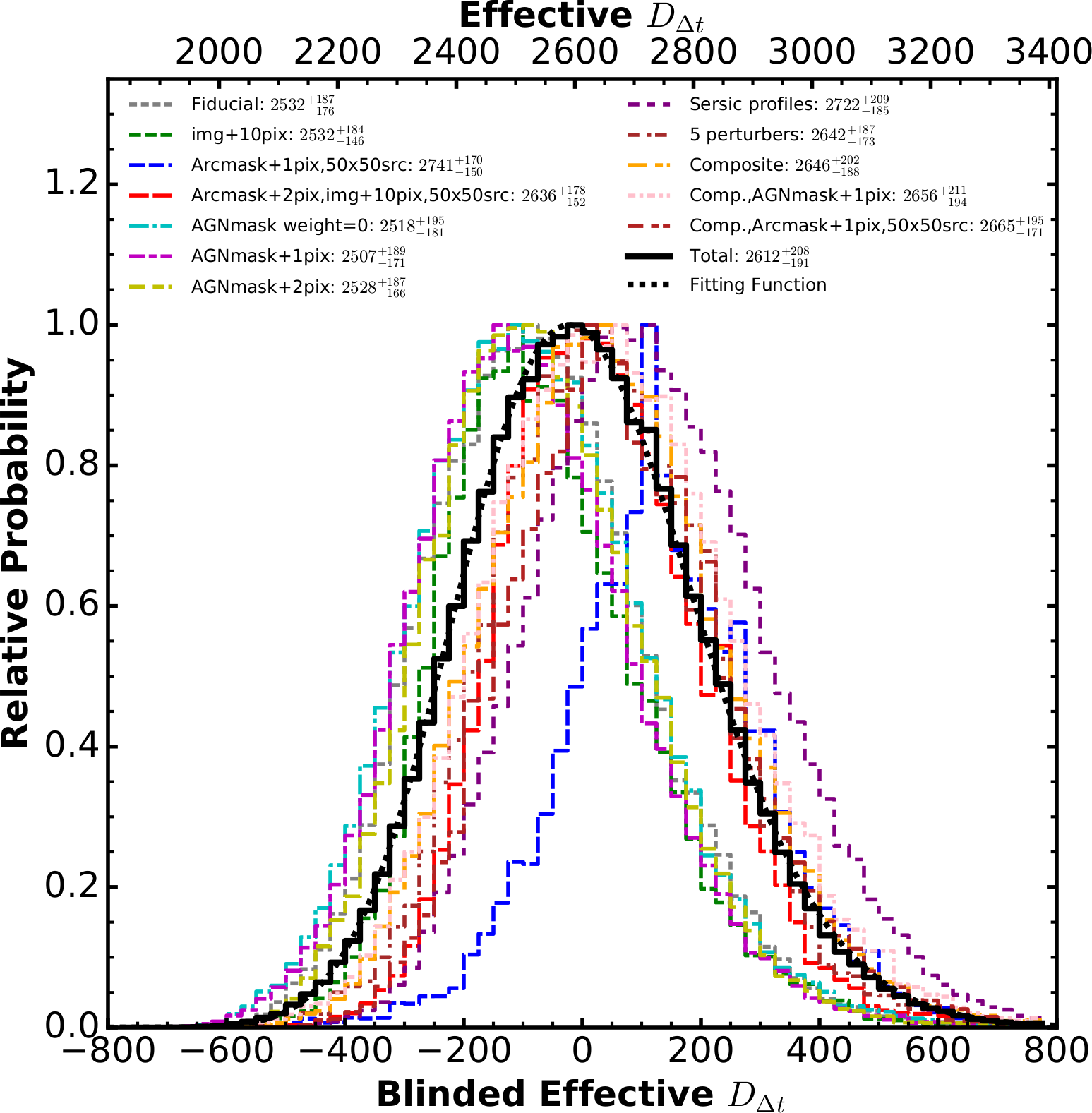
From our analysis of HE0435-1223, we constrain the effective time-delay distance to be 2612+208−191 Mpc, a precision of 7.6%. From this system alone, we infer a Hubble constant of H0 = 73.1+5.7−6.0 km/s/Mpc assuming a flat ΛCDM cosmology. This value is in good agreement with that of the latest distance ladder results (Riess et al. 2016), and higher than the value from Planck for a similar cosmology.
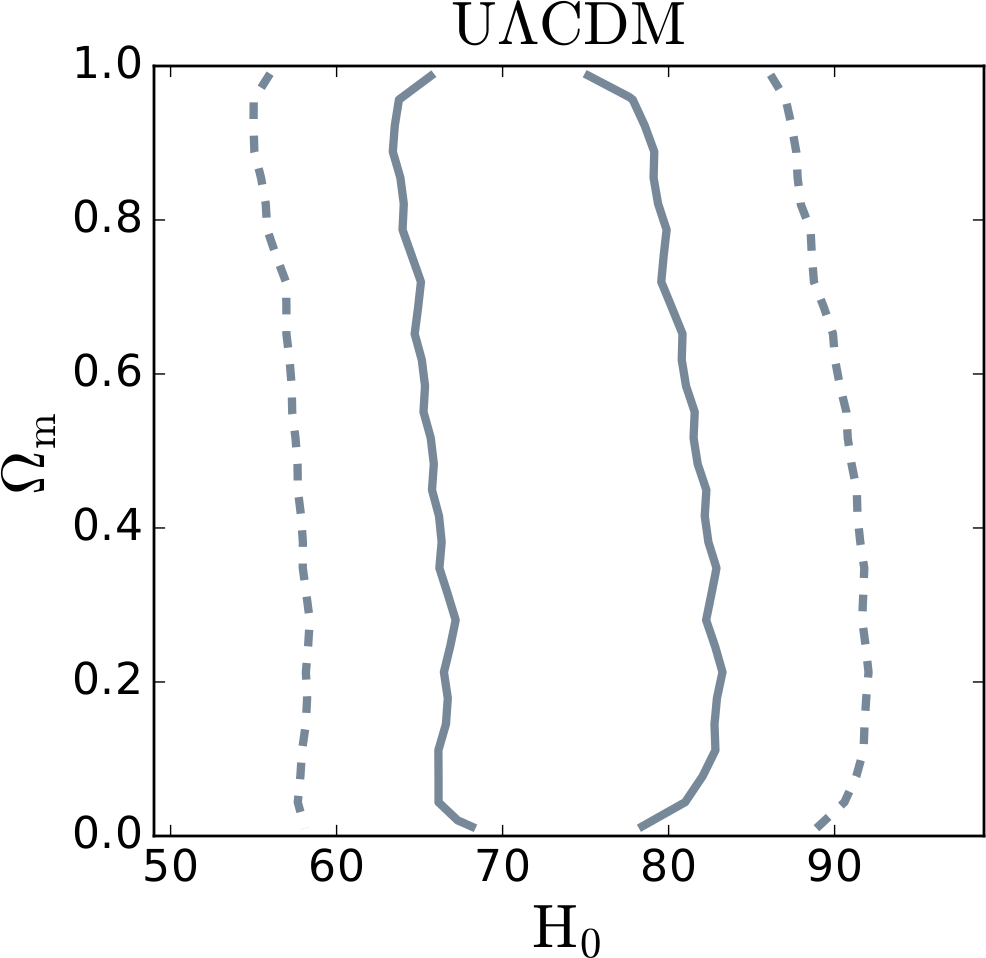
These constraints can be combined with the first two H0LiCOW lenses, B1608+656 (Suyu et al. 2010) and RXJ1131-1231 (Suyu et al. 2013), to infer cosmological parameters for a variety of models. For a flat LCDM cosmology, we obtain a 3.8% constraint on H0, independent of other probes. Analyses of the next two H0LiCOW lenses are in progress, which will contstrain H0 to better than 3.5% precision.